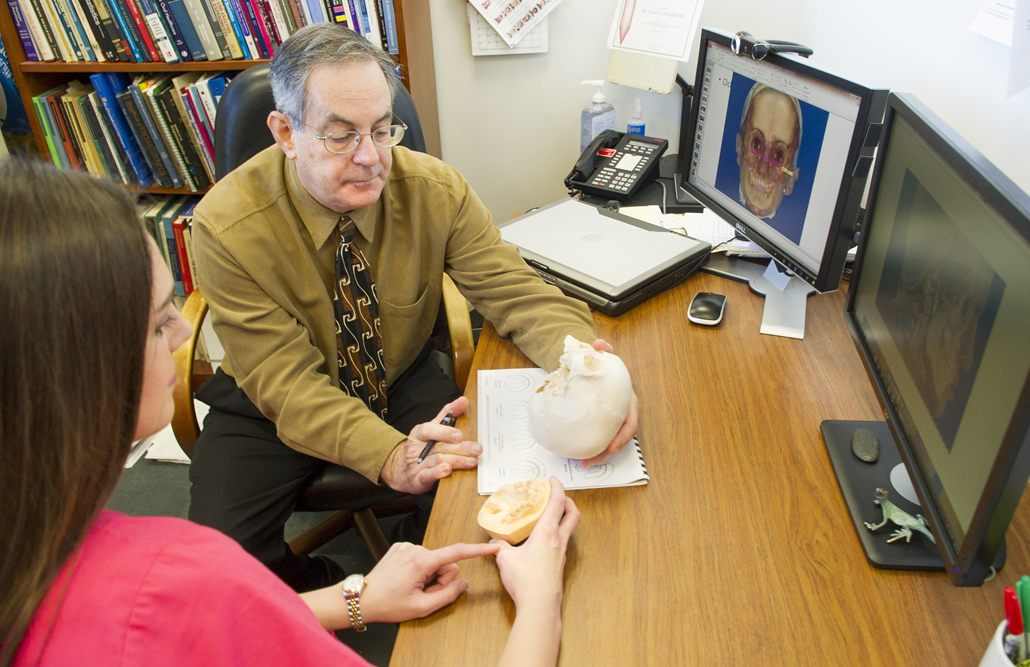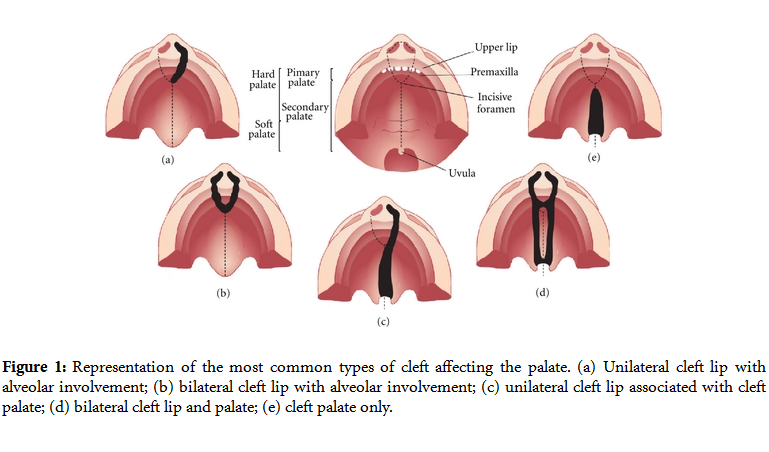Assessing a need

The results of a cleft lip and palate research study could lead to a new kind of clinic at TAMBCD.
Dr. Maureen Libby has made it her goal to understand the needs of adults with cleft lip and cleft palate in North Texas. There’s just one problem: No data exists. When it comes to accessing hard facts about the oral health care needs of these patients, they may as well be living on a deserted island.
Libby, a resident in graduate prosthodontics, hopes that by the completion of her master’s thesis that will no longer be the case.
Dr. Emet Schneiderman, associate professor in biomedical sciences and Libby’s faculty mentor, has some related plans in mind pending the research results. Perhaps the exploratory study could demonstrate the need for an adult cleft clinic right here at Texas A&M University Baylor College of Dentistry. But patients are at the core of this venture. How can patients be enrolled if, at least on paper, there are none to be seen?
The patients
According to the numbers from the Texas Birth Defects Registry, about one out of every 570 children born in North Texas will have a cleft lip and/or palate — a group of malformations in which the tissues of the lip or palate fail to fuse in the embryo, creating an opening in the upper lip or the roof of the mouth. Using Texas Health Department statistics, Schneiderman estimates that in 2013 alone, at least 180 children with clefts in this region will reach age 18.
Texas actively reports child cleft patient numbers starting at birth, so why does the record keeping stop once adulthood is reached? Schneiderman explains a few theories.
Medicaid coverage for children of low-income families cuts off at age 19 , and children’s hospitals with multidisciplinary, comprehensive health care teams don’t treat these patients through their adult years. The transient nature of young adults in their late teens and early 20s — with college, first jobs and new marriages — increases the likelihood this group will fall through the cracks.
However, adult patients with cleft lip and palate may have a host of needs, say the researchers. Treatment needed past 19 complicates matters.
“It’s frustrating because they have dental and medical needs,” says Libby, detailing swallowing complications, speech therapy, psychosocial concerns and even learning disabilities.
The clinic
The Pediatric Plastic and Craniofacial Surgery Team at Children’s Medical Center of Dallas is a sterling example of the multidisciplinary effort that is required to effectively treat cleft lip and palate. During the team’s periodic outpatient sessions, a dozen patients and at least three times as many doctors and health care providers from all ends of the profession — ranging from plastic surgery and speech pathology to orthodontics and prosthodontics — gather in one location.
“The patient stays in one room, and the doctors rotate to each one. They take photos and talk about what they need to do,” says Schneiderman. “You get all these specialists in one room caring just about you; there’s a great emphasis on interprofessional care.
“We want to replicate what they are doing on a smaller scale.”

It would be a natural fit, considering TAMBCD residents already treat approximately half of the cleft patients seen at Children’s, according to a proposal for the clinic drafted this spring. But instead of youngsters, a cleft and craniofacial clinic at TAMBCD would serve adults.
The initiative would require help from inside the school and out, drawing expertise from restorative sciences, oral and maxillofacial surgery and orthodontics residents and faculty, as well as plastic surgeons, speech therapists and social workers. Collaboration with neighboring hospitals and health education programs would also be an essential component.
Grafts, dental bridges and lip and nose surgery revisions are just a few of the common treatments that would be provided.
“As residents we don’t get exposed to this type of patient,” says Libby. “Establishing a center here would allow all of us to work together.”
Schneiderman’s focus remains far-reaching.
“Part of my vision for TAMBCD is that as the premier oral health care institution in North Texas we should be the first place that anyone with unusual orofacial conditions thinks of when they have a problem,” he says.
More than two dozen faculty members and administrators, as well as Dr. Alex Kane, who is in charge of the plastic and craniofacial surgery team at Children’s, have already gotten behind the concept. At the outset, half-day clinic sessions could occur at TAMBCD twice a year, at which point follow-up appointments would be made. Just one crucial detail remains: funding. But in order to attract benefactors, concrete data is required.
The research
The needs of adult patients with cleft lip and palate will be determined through a survey, which Libby distributed in September to tens of thousands of potential respondents at Texas A&M University, the dental school and various social media platforms. The intent is for anyone in this patient population to participate, offering crucial information about surgical treatment, continuing health care concerns as well as satisfaction with appearance.
 “The goal is to figure out the current medical and dental needs of adults with a history of cleft lip and palate,” says Libby. “Statistically it seems there should be a large population in our area, but we don’t see them.”
“The goal is to figure out the current medical and dental needs of adults with a history of cleft lip and palate,” says Libby. “Statistically it seems there should be a large population in our area, but we don’t see them.”
It only leads to more questions.
“Is this affecting their quality of life?” Libby asks.
She’ll find out more this winter, when data from the surveys will be collected and analyzed. Depending on the results, the concept for an adult cleft clinic at TAMBCD may be that much closer to becoming reality.
—Jenny Fuentes